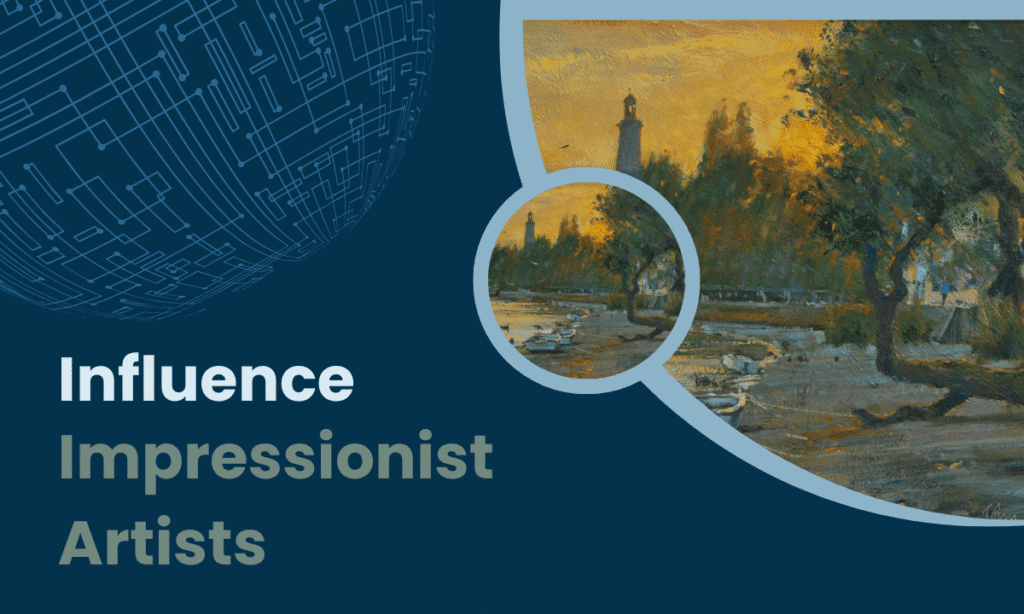In 1841, an American portrait painter named John Rand patented the first collapsible metal paint tube. It changed art forever. Suddenly, artists weren’t shackled to their studios—they could take their colors outside, capturing sunlight, movement, and fleeting moments in ways that were previously impossible. This wasn’t just a convenience; it was a revolution. Impressionist didn’t emerge solely from artistic vision; it was fueled by breakthroughs in pigments, brushes, and even railways that whisked artists to the countryside. Want to know how tubes, synthetics, and optics shaped masterpieces?
Let’s dive in—because understanding these tools doesn’t just explain the past; it can sharpen how you see art (or even create it) today.
1. The Paint Tube: Setting Impressionists Free
Before the invention of the collapsible paint tube in 1841, artists stored pigments in fragile pig bladders or glass syringes—messy, impractical, and prone to drying out. The metal tube changed everything:
-
Portability: Artists like Monet, Renoir, and Pissarro could paint en plein air (outdoors) without worrying about spoiled paints.
-
Vibrant Colors: Pre-mixed paints retained their freshness, allowing for brighter, more intense hues.
-
Longer Working Time: No more rushing to finish before oils hardened.
Claude Monet once said, “I owe everything to the invention of the tube.” Without it, his luminous landscapes—like Impression, Sunrise (1872), which gave the movement its name—might never have existed.
2. Synthetic Pigments: A New World of Color
The 19th century saw a chemical revolution in paint manufacturing. Traditional pigments (like lapis lazuli for ultramarine) were expensive and rare. New synthetic alternatives democratized color:
| Traditional Pigment | Synthetic Replacement | Impact on Art |
|---|---|---|
| Ultramarine (from lapis) | Cobalt Blue (1802) | More affordable, vibrant skies |
| Vermilion (toxic mercury) | Cadmium Red (1820s) | Safer, more stable reds |
| Lead White (poisonous) | Zinc White (1840s) | Less toxic, better blending |
These innovations allowed Impressionists to experiment boldly. Renoir’s The Swing (1876) glows with cadmium yellows and cobalt blues—colors that simply weren’t available to earlier generations.
3. The Rise of Portable Easels and Brushes
Painting outdoors required lightweight, adaptable tools:
-
Box Easels: Foldable designs let artists work anywhere.
-
Flat, Stiff Bristle Brushes: Perfect for quick, visible strokes—a hallmark of Impressionist technique.
Monet often used square-tipped brushes to create his signature “broken color” effect, layering strokes instead of blending. This technique, inspired by new tools, made his work shimmer with light.
4. Optics and Photography: Changing How Artists Saw the World
Impressionist didn’t just embrace new materials—they were influenced by scientific discoveries:
-
Color Theory: Chevreul’s Principles of Harmony and Contrast of Colors (1839) showed how adjacent hues intensify each other. Monet applied this in Water Lilies, using complementary colors to create vibrancy.
-
Early Photography: Cameras froze motion, revealing how light shifted in an instant. Degas’ The Ballet Class (1874) mimics candid snapshots, with off-center compositions and cropped figures.
5. Railways and Urbanization: Access to New Landscapes
The expansion of railroads in the 1800s had an unexpected impact on art:
-
Escape from Cities: Artists could easily reach the countryside. Monet’s Poppy Field (1873) captures Argenteuil, a quick train ride from Paris.
-
Modern Life as Subject: Scenes of bustling boulevards (like Caillebotte’s Paris Street; Rainy Day) reflected rapid urban changes.
6. How These Innovations Shaped Modern Art
The Impressionist embrace of technology didn’t just define their movement—it paved the way for modern art:
-
Broader Palette: Later movements (Fauvism, Expressionism) relied on synthetic colors.
-
Spontaneity Over Precision: The shift from studio perfection to on-the-spot sketches influenced Van Gogh and beyond.
-
Art for Everyone: Affordable materials meant more artists could participate, democratizing creativity.
Key Takeaways: Lessons for Today’s Artists
-
Tools Shape Vision: New materials didn’t just help Impressionists—they inspired them.
-
Embrace Experimentation: Like Monet testing pigments, innovation comes from play.
-
Stay Mobile: Technology frees creativity. (Think digital tablets vs. paint tubes!)
Final Thought
The next time you see a Monet, remember: those radiant hues and loose brushstrokes weren’t just artistic choices—they were made possible by tubes, trains, and chemistry. Great art doesn’t exist in a vacuum. It’s a conversation between imagination and the tools at hand.
Want to try an Impressionist technique? Grab a stiff brush, mix some cadmium red, and paint fast—just like they did.



